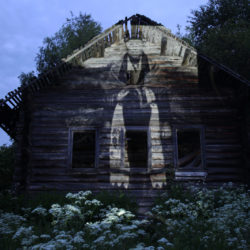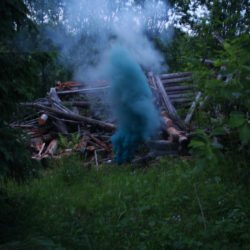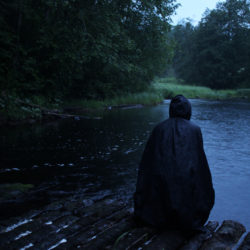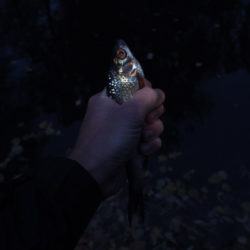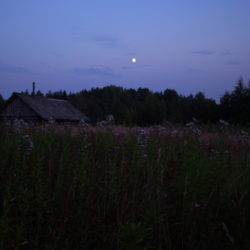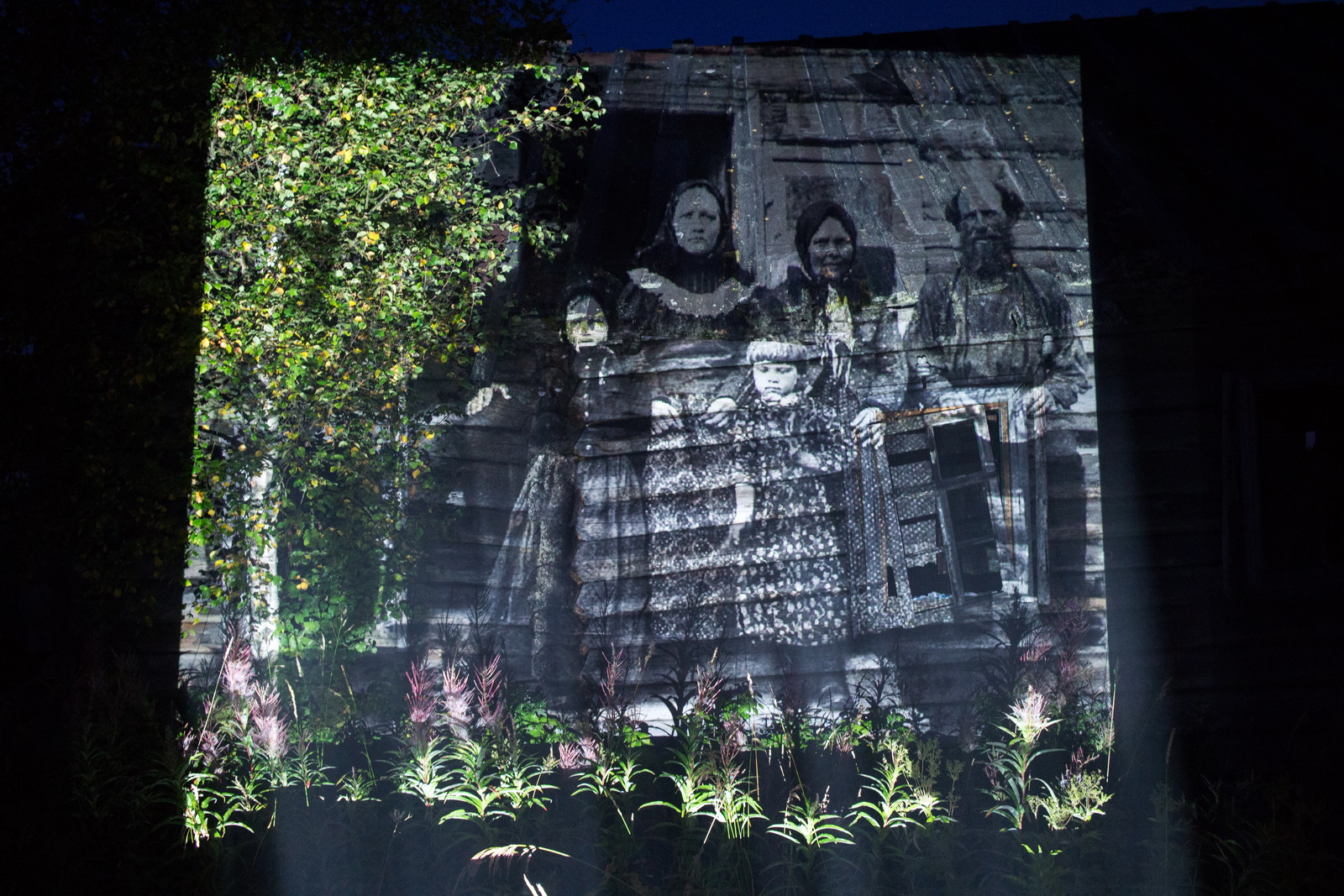
Exhibition: Evgeny Molodtsov. Vepsian forest.
[spb_row parallax_image_height=”content-height” parallax_image_movement=”fixed” parallax_image_speed=”0.5″ parallax_video_height=”window-height” parallax_video_overlay=”none” row_overlay_opacity=”0″ vertical_center=”true” width=”1/1″ el_position=”first last”] [spb_text_block pb_margin_bottom=”no” pb_border_bottom=”no” width=”3/4″ el_position=”first last”]
FotoDepartament presents a new exhibition:
Evgeny Molodtsov. Vepsian forest.
From 10 December 2016 to 2 February 2017
Место: FotoDepartament / 24, Vosstania str. / Fligel space / 2nd yard / 1 floor
Opening of exhibition: 10 December, Saturday 18.00
At the opening will be carried out an artist-talk “From irony to sincerity”
During the last century people feel huge difficulties defining the relation to geographical space, what let some experts speak about new kind of “nomadism” and “nomadic identity”. Such roaming the world is somehow unnatural, it deprives a man of social connections and stable identification. Often the governments interfere in the regulation of the process, accelerating it and assimilating whole nations. There were many reasons why people were being deprived of their belonging to their home in Russia and the Soviet Union. They had to leave their native city or country. The Civil War, the Great Patriotic War, repressions, widespread Soviet building projects and other crucial points have become the reasons why there is a low level of local/district identification of people in Russia.
During the last three years I have made four long travels through the original centre of Vepsian settlements – the Vepsian forest, examining the abandoned villages. Vepsian assimilation (from the beginning of the 20th century – abt. 30000, now – abt. 6000) was came largely because of the forced assimilation policy of minorities in the end of 1930s, government activity in 1950-60s, which was directed to reform the traditional rural settlement system (the liquidation system of the “unpromising” villages), and because of administrative and territory separateness (the abolition of Vepsian national districts in Leningradskaya Oblast and the Republic of Karelia in 1938). During my journey to the abandoned Vepsian villages, I was literally embedded in space and time, I “reformed” it by projecting archive century-old photographs made in these places on the tumbledown log huts. I reached out to the Vepsian mythology, epos and rituals, was holding myself out as a Vepsian and tried to experience the folk hurt anew, retraced the path Vepsians left the forest. My intervention somehow echoed the government activity, it was repressive towards both me and the place. I was a person without any local belonging, desired to grab another’s identity, history, pain of the Vepsians. What for? Such aspiration is impossible. I believe that the association between someone and his motherland or roots is a necessary requirement to self-identification even in the age of the “tourists” community development.
[/spb_text_block] [spb_text_block title=”Artist-talk: From irony to sincerity” pb_margin_bottom=”no” pb_border_bottom=”no” width=”3/4″ el_position=”first last”]
My generation grew up in vague atmosphere of the 90s watching the Simpsons and South Park, which put into our minds such integral establishments as irony and postmodern cynicism. However, currently I see how society is tired of postmodern deconstruction, irony, relativism and nihilism and is coming back to the lost sincerity and universal values. Hesitation, sincerity, hope, new romanticism, search for truth, reconstruction, surrealism, penchant, return to the universal concepts and ideas, all these terms are close to me. Moreover, my last work is based on them. These terms are also combined in the popular concept of metamodernism. Why “meta-”, not post- ; who introduced the term, what is the theoretical basement and what are the examples of metamodernism projects in the field of art, and photography especially, – that is what I want to talk about in my artist-talk.
[/spb_text_block] [/spb_row] [spb_row parallax_image_height=”content-height” parallax_image_movement=”fixed” parallax_image_speed=”0.5″ parallax_video_height=”window-height” parallax_video_overlay=”none” row_overlay_opacity=”0″ vertical_center=”true” width=”1/1″ el_position=”first last”] [spb_text_block pb_margin_bottom=”no” pb_border_bottom=”no” width=”1/1″ el_position=”first last”]
[/spb_text_block] [/spb_row] [spb_row parallax_image_height=”content-height” parallax_image_movement=”fixed” parallax_image_speed=”0.5″ parallax_video_height=”window-height” parallax_video_overlay=”none” row_overlay_opacity=”0″ vertical_center=”true” width=”1/1″ el_position=”first last”] [spb_text_block title=”Evgeny Molodtsov” pb_margin_bottom=”no” pb_border_bottom=”no” width=”3/4″ el_position=”first last”]
My methods in photography often include catalogization, deconstruction, appropriation and decontextualization.
First theme of interest – the influence of new technologies and virtual reality on the perception of the real world and how the digital/virtual environment influences our life. For example in the «Earth Herbarium» project I considered landscapes that have been significantly transformed by human activities using the images from Google Earth and Instagram. This project was mentioned by Photovisa contest, Russian Reporter magazine and Lens Culture.
The other field of my interest is the theme of identity transformation. In the project «Temple-200» I study how the role of the church as the visual attribute of Russian culture was transformed in the last two decades. This project was exhibited several times as a part of group exhibition «Well-timed» in Saint Petersburg, Moscow and Minsk.
In the ongoing project «Via Garibaldi» I examine the theme of different levels of identity (European, national and local) and wonder why there is a boom of referendum of independence in Europe.EDUCATION
2004-2009 – National Research University – Higher School of Economics (Moscow), World Economy and World Politics.
2008-2009 – School of journalism «Izvestia» (Moscow).
2011-2012 – University of Bologna (Italy), doctorate internship in Economics under Erasmus Mundus programme.
2012-2015 – Fotodepartament Institute, PostPhotography course.SOLO EXHIBITIONS
2012 – Personal Exhibition “3 italian impressions”. HubSpace. Cheboksary, Russia.SELECTED GROUP EXHIBITIONS
2009, 2010, 2012, 2014 – Young Photographers of Russia. Final Exhibition. Nigniy Novgorod, Cheboksary, Ples.
2010 – Project “Russia eternelle”. Town Hall. Paris, France.
2010 – Exhibition within the 2-nd Russian-Philippines business forum. Cebu, Philippines.
2013 – Final exhibition of International Photography Competition PHOTOVISA 2013. Krasnodar.
2014 – “Well-timed”. Saint Petersburg, Fotodepartament gallery.
2014 – Residency «House of Photo». Parallel program of Manifesta. Saint Petersburg, Fotodepartament gallery.
2014 – “Well-timed”. Minsk, Tseh gallery. Month of Photography in Minsk.
2015 – “Well-timed”. Moscow Museum of Modern Art (MMoMA). Biennale «Fashion and Style in the photography-2015».
2015 – Photofestival “Fotomania-2015”. Final exhibition. Project “Temple-200”. Kaliningrad, Russia.
2015 – Bitume Photofest. Loop corner. Italy.
2015 – International portfolio review. Choice of reviewers. Final show. Saint Petersburg, Russia.
2016 – Exhibition of media-art “Antimuseum”. Electromuseum. Moscow.
2016 – Photofestival “Fotoparad”. Grand Prix. Project “Vepsian forest”. Uglich.
2016 – «U vremeni v plenu». Project «Vepsian forest». Center of photography «March». Ekaterinburg.
CATALOGUES AND PUBLICATIONS
Young Photographers of Russia 2009, 2010, 2012, 2014. Union of Photo Artists of Russia.
Catalogue of festival Photovisa – 2013.
Book «Russia eternelle». Paris, France, 2010.
Earth Herbarium. Lens Culture website. 2013.
Earth Herbarium. Russian Reporter magazine. 2013.
House of Photo. Catalogue of the Parallel program of Manifesta. 2014.
Appropriation in the photography. FMagazine. 2015.
Earth Herbarium. Musée Magazine. №14, “Science”. 2016.
YET Magazine. Studying photography. №10. 2016.
PROFESSIONAL EXPERIENCE
Jury of photo festival «Evolution» 2012, 2013. Kostroma, Russia.
Founder of online-gallery FineArtRussia.ru
Personal website cargocollective.com/evgenymolodtsov
[/spb_text_block] [/spb_row]

